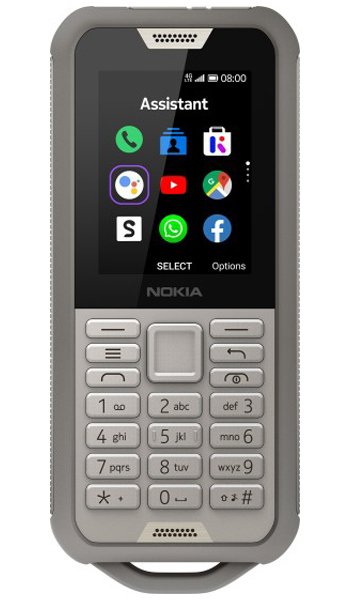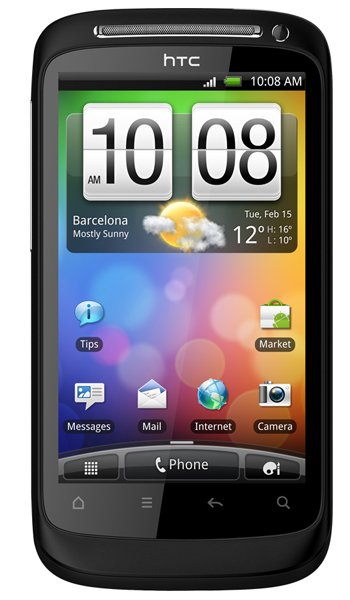Nokia 800 Tough vs HTC Desire S Comparación y Diferencias
Smartphone 1

Nokia 800 Tough
Smartphone 2

HTC Desire S
Smartphone 3
Nokia 800 Tough o HTC Desire S Comparación de características
o
 Características
Características
| Marca y modelo | Nokia 800 Tough | HTC Desire S | |
| Votos | (+) | (+) | |
| Fecha de lanzamiento | 2019, Septiembre | 2011, Febrero | |
| Dimensiones (AlxAnxProf) | 145.4 Х 62.1 Х 16.1 mm | 115 Х 59.8 Х 11.6 mm | |
| Peso | 161 g | 130 g | |
| Funda | Comprar en Amazon | Comprar en Amazon | |
| Colores | Black Steel, Desert Sand | Black, Red | |
| Batería | 2100 mAh, No extraíble, Li-Ion | 1450 mAh, Extraíble, Li-Ion | |
| Duración de la batería |
Tiempo en reposo - Hasta 1032 h (3G) |
Tiempo en reposo - Hasta 430 h (2G) / Hasta 455 h (3G) Tiempo de llamadas - Hasta 9 h 50 min (2G) / Hasta 7 h 10 min (3G) |
|
| Precio indicativo | 110 EUR | 100 EUR | |
| Consultar precio | en Amazon | en Amazon |
 Pantalla
Pantalla
| Tecnología | TFT, 256K colors | S-LCD | |
| Pantalla táctil | sí, capacitiva | ||
| Profundidad del color | 16M | 16M | |
| Tamaño | 2.4" inc | 3.7" inc | |
| Área de la pantalla | 17.8 cm2 | 39.0 cm2 | |
| Proporción (Altura:Ancho) | 4:3 (Al:An) | 5:3 (Al:An) | |
| Proporción (pantalla:cuerpo) | 19.8% | 56.7% | |
| Resolucion | 240 x 320 px | 480 x 800 px | |
| Puntos por pulgada | 167 PPI | 252 PPI | |
| Protección de pantalla | Corning Gorilla Glass | ||
| Protector de pantalla | Comprar en Amazon | Comprar en Amazon |
 Cámaras y vídeo
Cámaras y vídeo
| Cámara trasera principal | 2 MP, cámara singular | 5 MP, cámara singular | |
| Cámara especificaciones | -2 MP | -5 MP, AF | |
| Funciones | LED flash | LED flash | |
| Vídeo | Yes | 720p@30fps | |
| Cámara frontal (selfie) | 0 MP, | 0.3 MP,cámara singular | |
| Características | -No | -VGA |
 Rendimiento
Rendimiento
| Sistema Operativo (OS) | KaiOS | Android 2.3 (Gingerbread), actualizable a 4.0 (Ice Cream Sandwich); Sense UI 3 | |
| Chipset | - Qualcomm MSM8905 Snapdragon 205 (28 nm) | - Qualcomm MSM8255 Snapdragon S2 | |
| Procesador central (CPU) | Dual-core (2x1.1 GHz Cortex-A7) | 1.0 GHz Scorpion | |
| Procesador de gráficos (GPU) | Adreno 304 | Adreno 205 | |
| Tarjeta de memoria externa | microSD, hasta 32 GB (utiliza compartido/a SIM slot) | microSD, hasta 32 GB (slot dedicado) | |
| Memoria Interna | 4GB 512MB | 1.1 GB, 768 MB RAM |
 Benchmark
Benchmark
| GeekBench 4 Single Core | 274 | ||
| GeekBench 4 Multi-Core | 272 |
 Comunicación y conectividad
Comunicación y conectividad
| Tarjeta SIM | única tarjeta SIM (Nano-SIM)Dual SIM (Nano-SIM, modo de espera dual) | Mini-SIM | |
| Red | GSM / HSPA / LTE | GSM / HSPA | |
| Frecuencias | -2G - GSM 850 / 900 / 1800 / 1900 - SIM 1 & SIM 2 (dual-SIM model only) -3G - HSDPA 850 / 900 / 2100 -4G - LTE band 1(2100), 3(1800), 5(850), 7(2600), 8(900), 20(800) - EU LTE band 1(2100), 3(1800), 5(850), 7(2600), 8(900), 20(800), 28(700), 38(2600), 39(1900), 40(2300), 41(2500) - MENA, APAC, GCR |
-2G - GSM 850 / 900 / 1800 / 1900 |
|
| Velocidad de internet | HSPA 42.2/5.76 Mbps, LTE Cat4 150/50 Mbps | HSPA 14.4/5.76 Mbps | |
| GPRS | Si | Up to 114 kbps | |
| Edge | Si | Up to 560 kbps | |
| Wi-Fi | Wi-Fi 802.11 b/g/n, hotspot | Wi-Fi 802.11 b/g/n, DLNA, hotspot | |
| GPS | Si, dependiente del mercado A-GPS, GLONASS | Si, dependiente del mercado A-GPS | |
| NFC | |||
| USB | microUSB 2.0 | microUSB 2.0 | |
| Bluetooth | 4.1, A2DP, LE | 2.1, A2DP, EDR | |
| Radiación dañina | SAR - 0.33 W/kg (cabeza) 1.06 W/kg (cuerpo) |
 Música y Audio
Música y Audio
| Radio | FM radio | Radio FM estéreo, RDS | |
| Jack de auriculares | Sí | Sí |
 Otros extras
Otros extras
| Sensores | - Acelerómetro, Sensor de proximidad, brújula | ||
| Otros extras |
- SNS applications -MP4/H.264 player -MP3/WAV/AAC player -Organizer -Voice memo -Predictive text input - IP68 water proof (hasta 1.5m para 30 min) -MIL-STD-810G compatibilidad -Flashlight |
- Dedicated search key -MP3/AAC+/WAV/WMA player -DivX/XviD/MP4/H.264/WMV player -Organizer -Document viewer -Voice memo/dial -Predictive text input |
Opiniones y comentarios sobre Nokia 800 Tough y HTC Desire S
Si tuvieras que recomendar uno de estos teléfonos a un amigo, ¿cuál sería y por qué? Comparte tus argumentos utilizando el botón Añadir Opinión!
